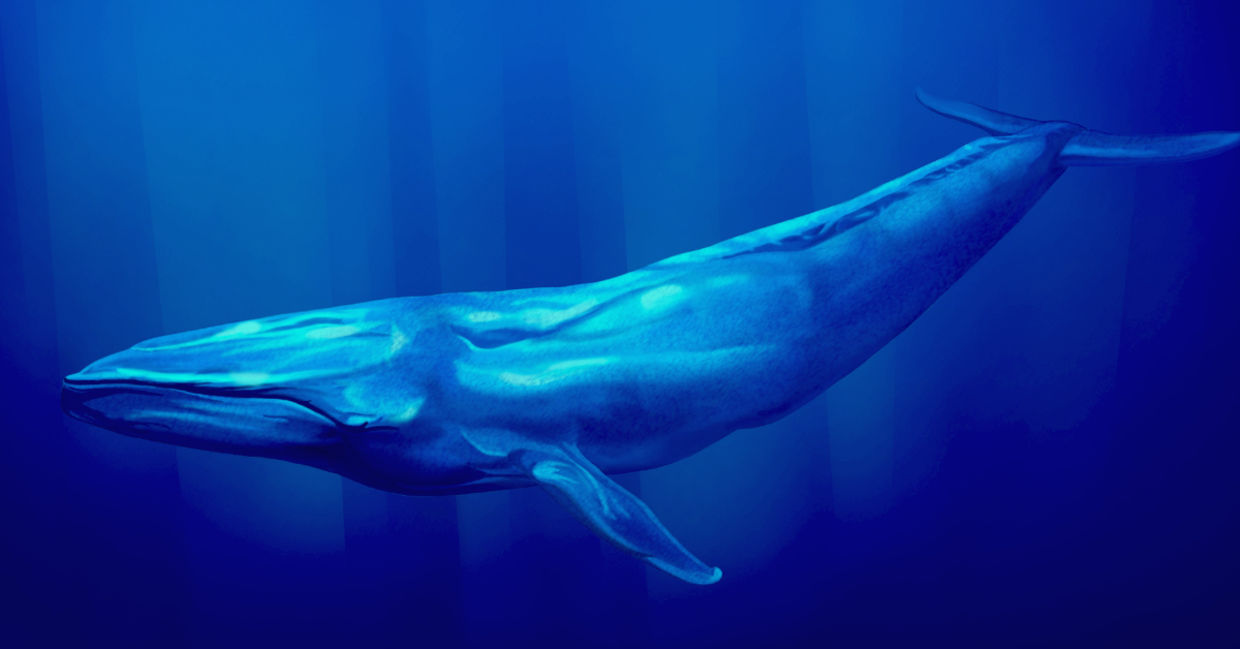
(Atomic Roderick/ Shutterstock.com)
While the endangered whales are no longer being hunted, numbers were greatly reduced due to commercial hunting in the early 1900s, according to NOAA Fisheries. Today, the primary threats to the non-migratory blue whales are vessel strikes and getting tangled in fishermen’s nets. But the world’s largest shipping line hopes to avoid collisions by rerouting its fleet, reported Business Insider.
MSC Mediterranean Shipping Company began changing the routes of the shipping lanes around Sri Lanka – a major feeding area for the blue whales – in mid-2022 after being advised by the International Fund for Animal Welfare (IFAW) and other animal protection groups.
Protecting the blue whales
Sri Lanka, is located in the Indian Ocean between Asia and Europe and is a transshipment hub for trade around the world, according to a press release from MSC. This busy shipping lane is inhabited by large populations of cetaceans that are in danger of being hit by large ships.
Moving the shipping lanes just 15 nautical miles to the south of where they currently are could reduce the risk of whale strikes by as much as 95 percent. But the routes were not changed and MSC decided to act on their own.
“We believe that the commercial shipping sector has an important role to play in protecting cetaceans, specifically in helping to reduce the risk of ship collisions with whales,” Stefania Lallai, vice president sustainability at MSC, said in the press release.
“MSC is proud to rank at or near the top of whale safety shipping rankings. However, we are not at all complacent. We believe that raising awareness of these issues and encouraging collaboration between industry, scientific bodies, civil society and governments is essential as we strive collectively to do more to minimize the risk of ship strikes.”
The new shipping lanes that are being used by MSC are approximately 15 nautical miles to the south of the regular traffic separation scheme (TSS) for commercial shipping. Westbound sea traffic is limited to latitude between 05 30N and 05 35N while eastbound is restricted to 05 24N and 05 29N. This is in order to avoid cetacean habitats.
“By ensuring these small changes, MSC is making a significant difference for these endangered whales. Whales often die as a result of collisions and this population is at risk. Ship strikes are both a conservation and a welfare problem, and even one whale death is one too many,” Sharon Livermore, the director of marine conservation at IFAW, told Business Insider.
Making it official
MSC’s voluntary rerouting doesn’t impact other shipping container companies but conservation groups are hoping that this decision will result in a permanent change to the shipping routes in the area, reported Business Insider.
“Rerouting is the key hope to turn the tide for blue whales off Sri Lanka. It also demonstrates to the Sri Lankan government that now is the time to take appropriate action and move the shipping lane out of blue whale habitat for all merchant vessels,” Nicolas Entrup, the director of International Relations at OceanCare, told Business Insider. This would reduce the number of whales involved in collisions and will allow the population to thrive.
YOU MIGHT ALSO LIKE:
Whales Have Something to Cheer About!
Hauntingly Beautiful Whale Song is Used for Exploring
Majestic Right Whale Spotted Frolicking in the Ocean







